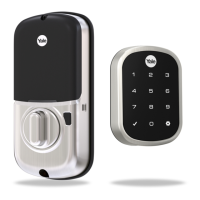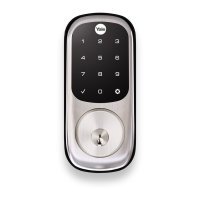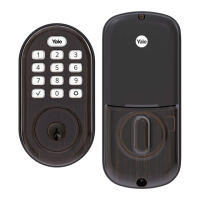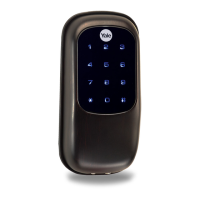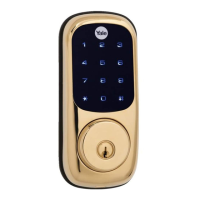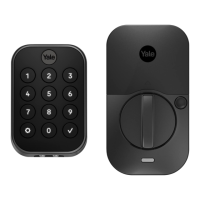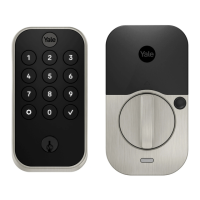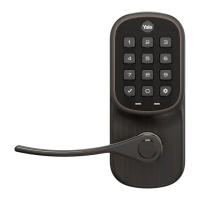Door is binding
a. Check that door and frame are properly aligned and door is free swinging.
b. Check hinges: They should not be loose or have excessive wear on knuckles.
Bolt will not deadlock
a. Check for sufficient clearance of the bolt within the strike-side jamb. Correct this by increasing the depth of the pocket for the
bolt.
b. Check for misalignment of bolt and/or strike which may be preventing bolt from properly entering the strike. With the door open,
extend and retract the bolt; if it is smooth, check the strike alignment.
Bolt does not extend or retract smoothly
a. Bolt and strike are misaligned, see above.
b. Check the backset of door relative to adjustments already made to bolt.
c. Verify proper door preparation and re-bore holes that are too small or misaligned.
d. Verify keypad wire harness is routed under the bolt (see Fig. A).
e. Verify bolt is installed with correct side up (Fig. A).
Keypad numerics are scrolling
Remove interior escutcheon and check to ensure that the wire harness lies flat against the back recessed area and is properly
routed along the side of the escutcheon and tucked under the plastic cable guide.
NOTE TO INSTALLER AND CONSUMER
While Yale has included several features to prevent lockout ® (9-Volt battery jumper, low battery warnings),
it is still possible for a lockout situation to occur. Because this product does not have a mechanical override
(a key), Yale recommends to use ® this product in an environment where there are additional entry points
into the dwelling.
FCC:
Class B Equipment
This equipment has been tested and found to comply with the limits for a Class B digital device, pursuant to Part 15 of the Rules. These limits are designed to
provide reasonable protection against harmful interference FCC e in a residential installation. This equipment generates, uses, and can radiate radio frequency
energy and, if not installed and used in accordance with the instructions, may cause harmful interference to radio communications. However, there is no
guarantee that interference will not occur in a particular installation. If this equipment does cause harmful Interference to radio or television reception, which can
be determined by turning the equipment off and on, the user is encouraged to try to correct the interference by one or more of the following measures:
Reorient or relocate the receiving antenna.
Increase the separation between the equipment and receiver.
Connect the equipment into an outlet on a circuit different from that to which the receiver is connected.
Consult the dealer or an experienced radio/ technician for help.
Warning: Changes or modifications to this device, not expressly approved by Yale Security Inc. could void the user’s authority to operate the equipment.
Industry Canada:
This Class A digital apparatus meets all requirements of the Canadian Interference Causing Equipment Regulations.
Installing the Z Plus Module
IMPORTANT: the batteries be removed prior must to removing and/or inserting the network module:
Remove battery cover and batteries.
Remove and/or insert Network Module.
Reinstall batteries and battery cover.

